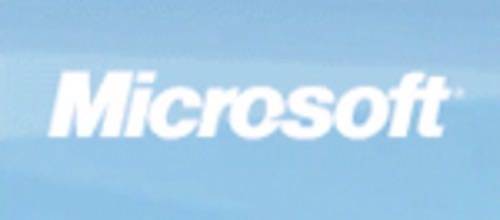It’s called a spoiler tactic. You take your competitor’s biggest cash cow and offer a free alternative. Everybody from Linux to Google has used the tactic against Microsoft. So who can fault Microsoft when it uses it against Google’s advertising cash cow? The guys who benefit from this tactic today are the good folks at OpenX, the open-source alternative to ad servers from Google such as DoubleClick (for big publishers) and AdManager (for small publishers). (Disclosure: ReadWriteWeb uses OpenX to host our advertising inventory.)

Of course, ad-serving itself is not really the cash cow, but it is a key part of it. The real prize is a viable alternative to AdSense. This is the background of today’s news about OpenX and Microsoft announcing an advertising technology partnership.
OpenX Named a Preferred Partner for Microsoft Ad Serving Products
Here is the news today from OpenX and Microsoft. In a nutshell:
- Microsoft will refer publishers for enterprise ad-serving solutions to OpenX.
This makes OpenX a more viable alternative to expensive ad server solutions. (Hint to publishers looking to cut costs: why spend that money on Doubleclick when there is a free alternative?) - OpenX will promote Microsoft’s Content Ads monetization/advertising product.
OpenX has 150,000 websites that serve more than 300 billion ads per month. Google Ad Manager, which is the free alternative to DoubleClick for smaller publishers, optimizes for AdSense. So Content Ads, an alternative to AdSense, is a natural ally for OpenX.
Click here for a comparison of OpenX and AdManager (the comparison is good, while also promoting Trafficspaces as an alternative to both).
Content Ads is Microsoft’s entry to the contextual ad game. It “matches ads to relevant editorial content, allowing advertisers to increase campaign effectiveness and allowing publishers to achieve a higher yield on certain types of inventory.”
Let’s Get a Second Opinion on Content Ads
We spoke with Dr. Riza C. Berkan, CEO at Hakia, which makes a contextual advertising solution called Contexa that is not unlike Content Ads. (Disclosure: ReadWriteWeb uses Contexa, and Hakia is a sponsor.) Here is his view:
“Content detection is a specific challenge where Microsoft will be judged by its semantic capabilities. It could be a historic moment if it works. Otherwise, it will contribute to the ongoing “blinding” irrelevancy.”
Riza is saying that relevancy and ranking are hard technical challenges. We know that relevancy is a bit weak on AdSense. Can Content Ads do better than AdSense? That is the bar.
AdSense’s Weakness, the Hunt for Relevance and the Shift to “Direct”
We have written before about the possible weakness in AdSense, which is at the heart of the Google cash cow. Our theory is that we are moving to a place where publishers will sell more directly.
Draw a quadrant with “Large” to “Small” on one axis and “Publishers” to “Advertisers” on the other:
- “Large” to “Large”
This is where we find the traditional internal sales force at big “Publishers” working with agencies at big “Advertisers.” This world is not changing fast. Technology solutions and networks focus primarily on selling remnant. - “Large” to “Small”
There is always a role for ad networks to aggregate volume from large advertisers and bring that to small publishers. This is what Federated Media does for ReadWriteWeb. This works well, and we will likely see more niche ad networks serving this function in different markets (for example, FoodBuzz in the food market). - “Small” to “Small”
This is small advertisers reaching small publishers. This is the space in which AdSense and all of the automated ad networks operate. The genius of Google was to enable small advertisers to get results with small budgets: this has been the enabler for thousands of startups. But we’re seeing a shift in this market. There is no reason why advertisers should not buy directly from publishers. Many of these advertisers will also be “the people formerly known as audience.” As long as a simple self-service solution exists, there is no reason for an intermediary to take a big cut of the ad dollars at the toll booth.
OpenX and Content Ads are positioned to reduce the ad toll booth costs.
The winner will be decided by relevance. If the ads are relevant, then they will be useful to the audience and therefore have better ROI for advertisers.
These bruising battles between the big guys help the small guys. Google will bring down the cost of MS Office, and Microsoft will bring down the cost of online advertising.










